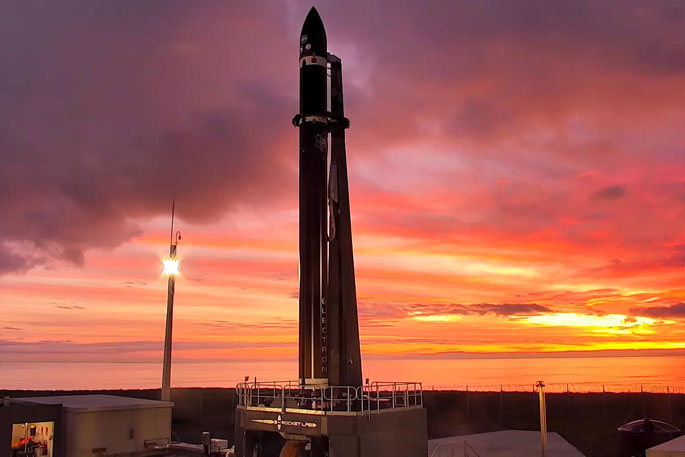Rocket Lab has successfully launched CAPSTONE from New Zealand.
CAPSTONE, a microwave-oven-sized satellite designed to test a new orbit around the Moon for NASA, was launched at 9.55pm on Tuesday in Mahia.
Mahia is where Rocket Lab Launch Complex 1 is based.
The mission is the first launch of NASA's Artemis program, and was Rocket Lab's 27th Electron launch.
"Tuesday's launch was an important step in humanity's return to the Moon and a testament to the determination, resolve, and innovation of the hundreds of people behind CAPSTONE,” says Rocket Lab founder and CEO, Peter Beck.
"Rocket Lab was founded to open access to space and enable ground-breaking missions like this that push the limits of what's possible with small satellites.
"While CAPSTONE's journey to the Moon has only just begun, we're proud to have safely delivered CAPSTONE to space."

Designed and built by Tyvak Nano-Satellite Systems, a Terran Orbital Corporation, and owned and operated by Advanced Space on behalf of NASA, the Cislunar Autonomous Positioning System Technology Operations and Navigation Experiment (CAPSTONE) CubeSat will be the first spacecraft to test the Near Rectilinear Halo Orbit (NRHO) around the Moon.
Researchers expect this orbit to be a gravitational sweet spot in space – where the pull of gravity from Earth and the Moon interact to allow for a nearly-stable orbit – allowing physics to do most of the work of keeping a spacecraft in orbit around the Moon.
NASA has big plans for this unique type of orbit.
The agency hopes to park bigger spacecraft – including the lunar-orbiting space station Gateway – in an NRHO around the Moon, providing astronauts with a base from which to descend to the lunar surface as part of the Artemis program.
CAPSTONE was launched to an initial low Earth orbit by Rocket Lab's Electron launch vehicle and then placed on a ballistic lunar transfer by Rocket Lab's Lunar Photon spacecraft bus.
Unlike the Apollo lunar missions of the 1960s and 70s, which took a free return trajectory to the Moon, this fuel efficient ballistic lunar transfer makes it possible to deploy CAPSTONE to such a distant orbit using a small launch vehicle.
Standing at just 59 feet tall, Electron is the smallest rocket to attempt a launch to the Moon.
"This is Rocket Lab's most ambitious mission yet. For the first time, Electron and Photon are going far beyond standard mission profiles, pushing the envelope of what's possible for interplanetary small spacecraft missions," says Peter.
"No spacecraft has ever been placed in this type of orbit, so it's exciting to be working with such innovative partners in NASA, Advanced Space, and Terran Orbital to make this ground-breaking mission possible."
Liftoff! #CAPSTONE launched aboard a @RocketLab Electron rocket to pave the way for future @NASAArtemis missions to the Moon and beyond.
— NASA (@NASA) June 28, 2022
What's next for the microwave oven-sized satellite? Check out https://t.co/dMVnvEQcfC for updates. pic.twitter.com/VVoAOjSYbD
New Zealand's participation in the Artemis Accords is helping New Zealand researchers and our space sector companies to participate in the Artemis Program.
New Zealand's space sector is worth over $1.7 billion per annum with a space manufacturing industry that generates around $247 million per annum in revenue. Read more here.



0 comments
Leave a Comment
You must be logged in to make a comment.